Since its inception, the FIFA Women’s World Cup has been a beacon of change and inspiration for women athletes globally. The seeds for this groundbreaking event were planted in the late 1980s, when the idea of an international women’s soccer championship was proposed. Finally, in 1991, the inaugural Women’s World Cup took place in China, showcasing the prowess and determination of women athletes on an international platform.
The tournament had a profound effect on women’s sports. For the first time, countries across the globe witnessed firsthand the sheer talent, dedication, and passion that female athletes brought to the soccer field. The success of this initial tournament paved the way for the growth of the FIFAWWC, turning it into a quadrennial event that attracts millions of viewers worldwide.
As the years passed, the Women’s World Cup has not only grown in size but also in stature. Countries previously indifferent to women’s soccer began investing in it, recognizing its potential to inspire and unite. By the time the 2019 FIFA Women’s World Cup was hosted in France, it had transformed into a mega-event with a global fan base, breaking viewership records and solidifying its place as a leading sports event. Anyways, let’s check out 10 FIFA Women’s World Cup Facts…
10 – The Global Investment Boom in Women’s Football
The world of women’s soccer has undergone a transformational change over the past few decades. One of the most significant shifts has been the surge in investments by nations into their women’s football teams. Traditionally, men’s football dominated the limelight, receiving the lion’s share of resources and attention. But as the talent and potential of female athletes became evident, especially with the success of events like the FIFA Women’s World Cup, countries began to take notice.
Increased investment has meant better training facilities, skilled coaches, and more exposure for women’s football. And the result? Highly competitive matches that keep fans at the edge of their seats. The skill level has risen dramatically, and so has the unpredictability of match outcomes, adding to the thrill. As more nations prioritize women’s football, the game’s future seems bright, with promise of even more captivating matches to come.
09 – Formiga: The Ageless Wonder of Women’s Soccer
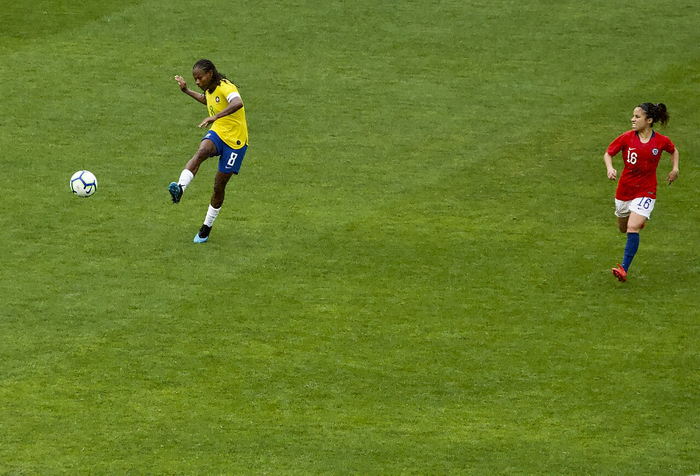
Miraildes Maciel Mota, popularly known as Formiga, is a name that resounds with respect in the world of women’s soccer. Her dedication to the sport is evident in her impressive career that spans over two decades. On June 23, 2019, Formiga made history by becoming the oldest player to ever grace the Women’s World Cup stage against France, at the age of 41 years and 112 days.
Formiga’s longevity in such a demanding sport is testament to her dedication, discipline, and passion. Her experience and football IQ have made her an invaluable asset to her teams over the years. Players like Formiga inspire countless budding athletes, showcasing that with determination, age is just a number.
08 – Germany’s Back-to-Back Triumphs
When we talk about consistency in women’s soccer, Germany’s national team inevitably comes up. The Germans set a benchmark when they clinched the FIFA Women’s World Cup titles consecutively in 2003 and 2007. Such back-to-back victories are a testament to the team’s tenacity, skill, and ability to perform under pressure.
These consecutive victories solidified Germany’s reputation as a powerhouse in women’s football. With a robust training infrastructure and a deep-rooted football culture, Germany’s success is a result of years of investment and faith in their women athletes. Their triumphs inspire upcoming players and offer a blueprint for other nations on building a dominant side.
07 – The Unyielding Legacy of USWNT
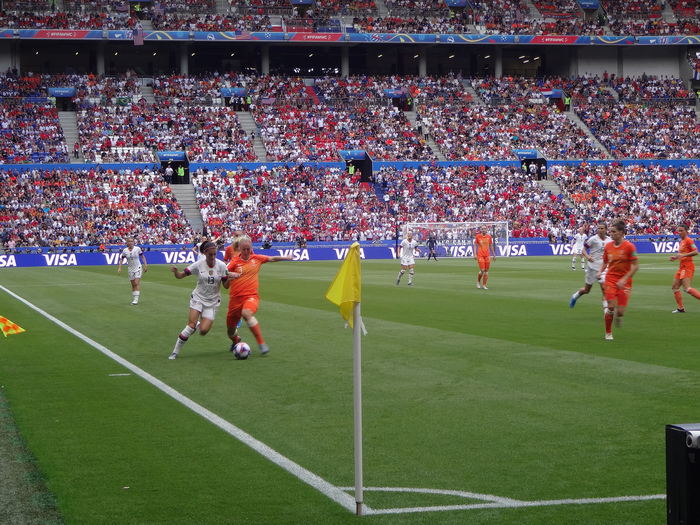
The USWNT stands as a colossus in the realm of women’s soccer. With four FIFA Women’s World Cup titles under their belt, achieved in 1991, 1999, 2015, and 2019, they have set a standard that teams worldwide aspire to reach. Their victories aren’t mere moments of success; they are a culmination of years of training, dedication, and an undying spirit.
Each title run showcased their unique strengths. Whether it was their groundbreaking win in 1991, the iconic 1999 triumph, or their recent successes in 2015 and 2019, USWNT has consistently displayed a blend of skill, strategy, and passion. Their legacy is not just about victories but also about inspiring millions and setting a gold standard in women’s football.
06 – Marta: The Goal-Scoring Phenom of Women’s Football
Brazil has always been a cradle for football legends. And when it comes to women’s soccer, Marta Vieira da Silva, simply known as Marta, stands out. Holding the esteemed record for the most total goals at the FIFA Women’s World Cup, her name is synonymous with unparalleled skill and achievement.
In the 2007 edition of the tournament, fans were treated to a goal-scoring masterclass as Marta dazzled opponents, netting seven goals in a single tournament. Her football acumen, precise strikes, and uncanny ability to find gaps in defenses make her a player for the history books. Young aspirants and even established players look to her career as a beacon of excellence in women’s football.
05 – Skyrocketing Global Interest: A Billion Eyes on Women’s Football
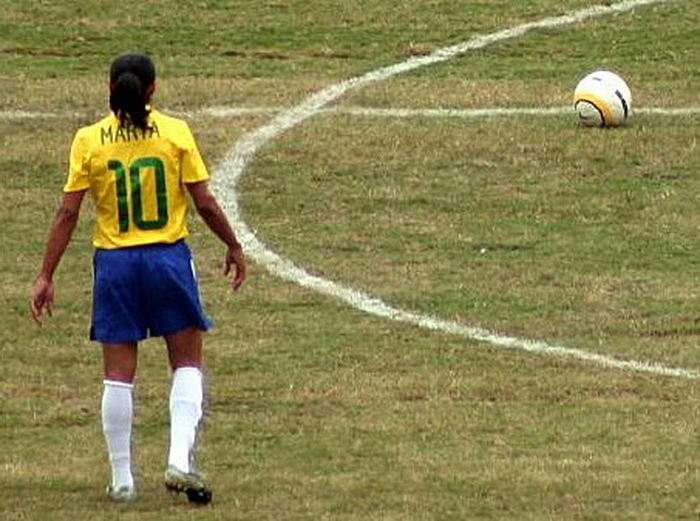
It’s not just the on-field action that’s heating up; the FIFA Women’s World Cup is shattering viewership records too. The 2019 edition, hosted by France, witnessed a staggering 1.12 billion viewers, tuning in from every corner of the globe. This audience number reflects not just a passing interest but a deep-rooted, burgeoning passion for women’s football.
This record-breaking viewership signifies a shift in global sports viewership patterns, with audiences keen to witness high-quality women’s soccer. The event’s success also provides a strong platform for sponsors, advertisers, and media networks, highlighting the lucrative potential and global appeal of the women’s game.
04 – The Social Media Surge: Amplifying Women’s Soccer
There’s no denying the power of social media in today’s digital age. Its role in spotlighting the women’s game has been invaluable. Platforms like Twitter, Instagram, and Facebook have been instrumental in bringing game highlights, player stories, and behind-the-scenes content to millions of fans globally.
Social media’s real-time nature allows fans to engage, discuss, and even critique matches as they unfold, creating a global community of women’s soccer enthusiasts. This amplified exposure has led to a rapid rise in support for the women’s game, making players household names and inspiring countless young girls to pursue their football dreams.
03 – The Evolution of Women’s Football: Fitness and Skill Redefined

Long gone are the days when women’s football was seen as a lesser version of the men’s game. Today’s women footballers are not just athletes. They are finely-tuned machines, exemplifying peak physical and technical prowess. From intense training regimes to meticulous diet plans, the modern female footballer embodies fitness, strength, and speed.
Moreover, their technical abilities on the pitch have seen a notable enhancement. Be it intricate dribbling, pinpoint passing, or clinical finishing, today’s players are setting new benchmarks in football excellence. This evolution, evident in tournaments like the FIFA Women’s World Cup, is a testament to the hard work, dedication, and passion that women bring to the beautiful game.
02 – Where It All Began: Guangdong, China, 1991
History was etched in the annals of sports when Guangdong, China, proudly hosted the very first FIFA Women’s World Cup in 1991. A groundbreaking event in women’s soccer, this inaugural tournament laid the foundation for the global platform that female footballers enjoy today.
While many might remember the winners or key matches, the true essence lies in the fact that it represented a leap towards gender equality in sports. It was a significant statement by FIFA, recognizing and appreciating the talent and passion women brought to football. Guangdong, with its vibrant culture and football-loving populace, provided the perfect backdrop for this revolutionary event. This 1991 tournament set in motion a series of events that have since shaped the destiny of women’s football worldwide.
01 – The Pinnacle of Women’s Football: The Grandeur of the FIFA Women’s World Cup
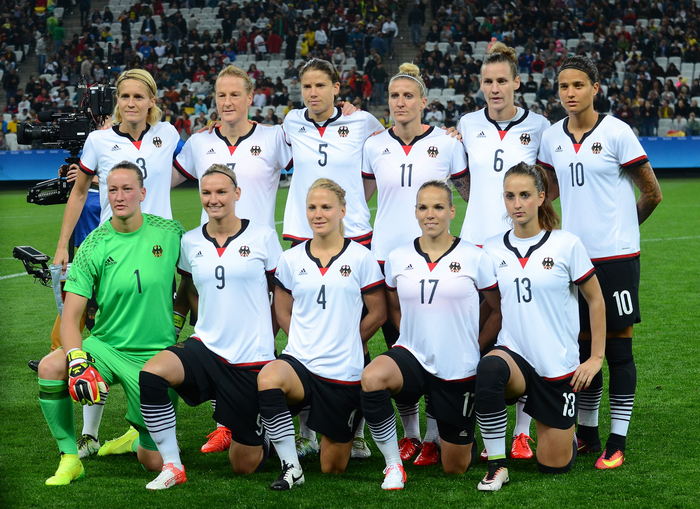
When you speak of football tournaments, the FIFA Women’s World Cup undoubtedly stands as the most prestigious and grandest event in women’s soccer. More than just a competition, it’s a celebration of talent, determination, and global unity. Teams from various continents converge, each representing their nation’s hopes and dreams.
Over the years, the tournament has grown exponentially, both in terms of participation and viewership. Its scale is unmatched, with countries investing heavily in their squads, ensuring top-notch facilities and intensive training. The World Cup isn’t just about the trophy; it’s about showcasing the progress, challenges, and the undying spirit of women in sports. Every edition tells a unique story, every match leaves an indelible mark, and every goal is a testament to the growth and popularity of women’s soccer. In the grand tapestry of sports, the FIFA Women’s World Cup shines the brightest, embodying the zenith of female athletic achievement.
The Underrated Jewel: Women’s Soccer Popularity Conundrum
While the FIFA Women’s World Cup garners attention every four years, women’s soccer in general has often been overshadowed by its male counterpart. Many ask the pressing question: Why is women’s soccer not more popular?
Several factors contribute to this discrepancy. Historically, women’s sports have been given less coverage by media outlets, leading to a lack of visibility. Moreover, investment in women’s soccer has been significantly less compared to men’s, resulting in fewer resources for training, infrastructure, and promotion.
Societal perceptions also play a part. Stereotypes about women in sports have often affected the way their games are perceived. However, with the increasing success of events like the FIFAWWC and the undeniable skill and talent of female athletes, these perceptions are gradually changing.
Furthermore, there’s a growing demand from fans for more representation and coverage of women’s soccer. Platforms streaming women’s league games have seen a surge in viewership, indicating a promising shift. With continuing advocacy, investment, and fan support, women’s soccer’s popularity is rising, matching the fervor and enthusiasm of the men’s game.
Who is Favourite to Win the Women’s World Cup?
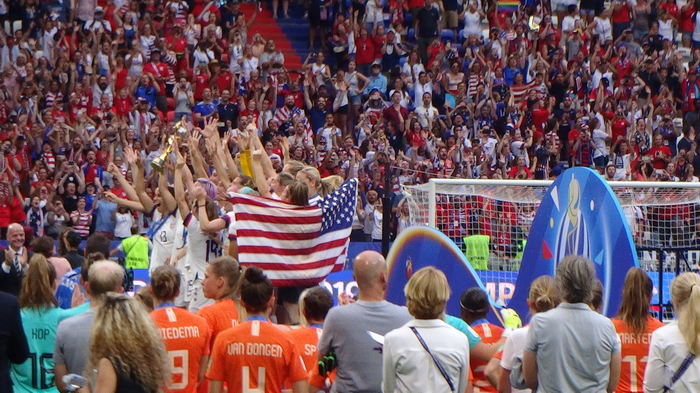
Predicting the favourite to win the FIFA Women’s World Cup is no easy task, given the rapid evolution of women’s soccer. Historically, the USWNT has been a dominant force, securing four titles to date. Their flair, precision, and athletic prowess make them a formidable contender in every edition.
However, European nations have been closing the gap rapidly. Teams like France, Germany, and the Netherlands have showcased high-quality soccer in recent editions, challenging the traditional powerhouses.
Emerging teams, particularly from Asia and Africa, have demonstrated their capability to spring surprises, adding to the unpredictability of the tournament. The inclusion of diverse teams and the growing talent pool make the Women’s World Cup a spectacle where predictions are often overturned, making every match a thrilling watch.

